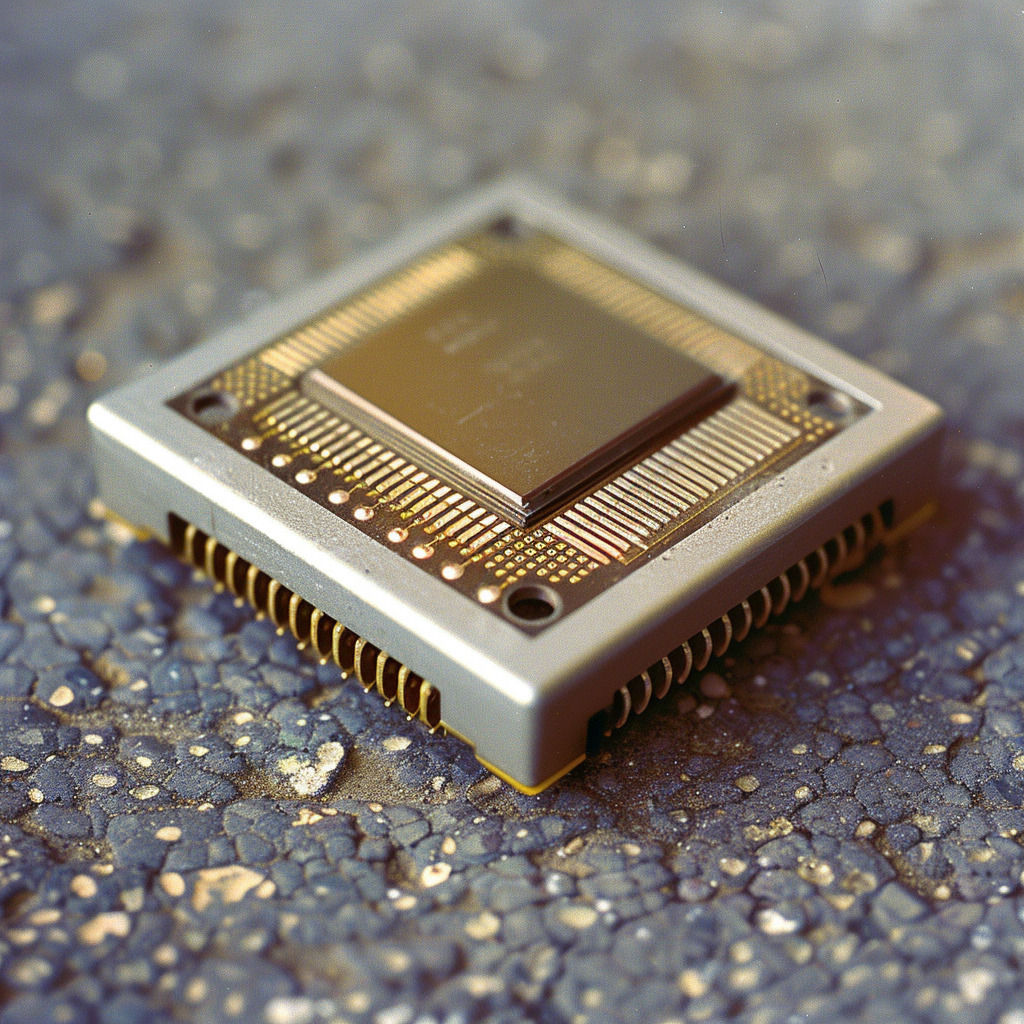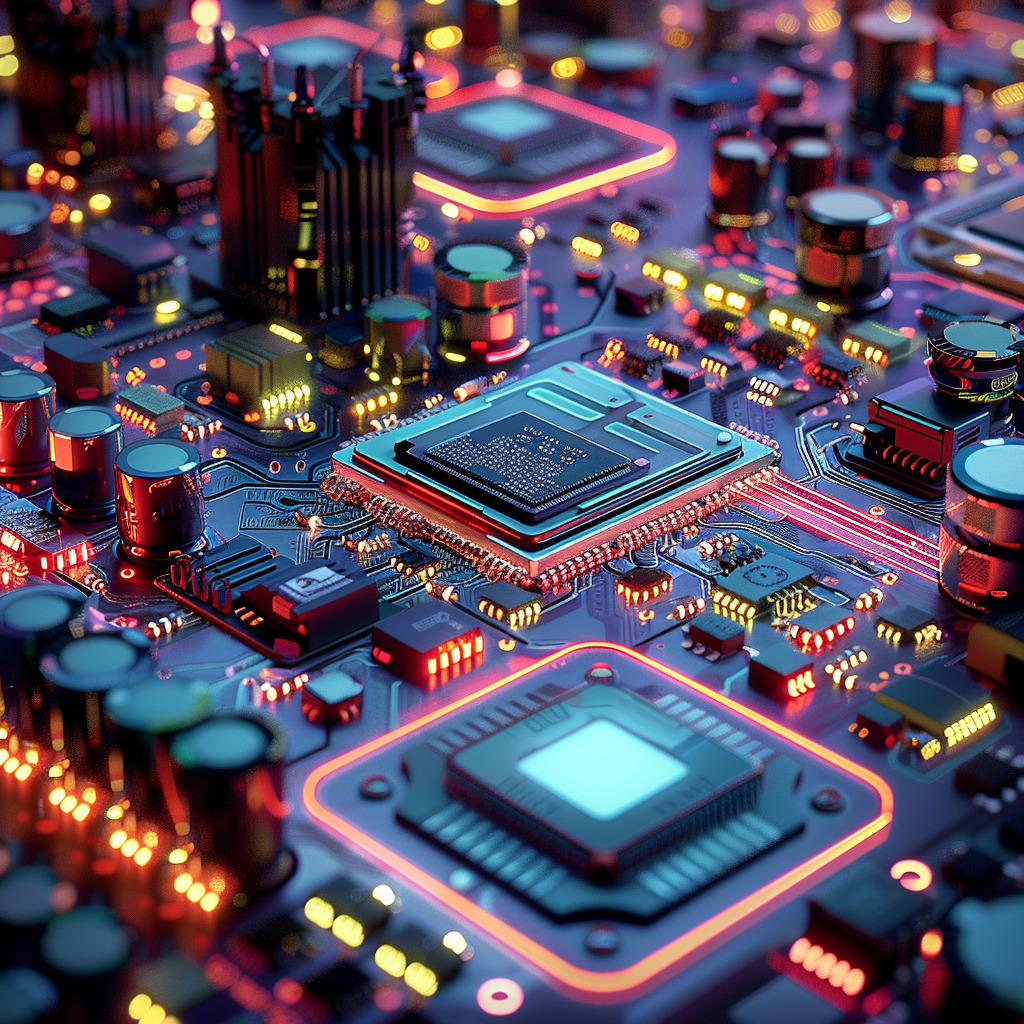Time: 2024-03-22 15:35:02View:
A microprocessor is a critical component found within computers and electronic devices, serving as the central processing unit (CPU). It is a small but highly complex integrated circuit, housing millions, or even billions, of transistors and other electronic components. Essentially, the microprocessor functions as the brain of the device, responsible for executing instructions and performing calculations necessary for its operation.
Fundamentally, the purpose of a microprocessor is to process and manipulate data. It achieves this by fetching instructions from memory, decoding them, executing the required operations, and then storing the results back into memory. This sequential process allows the microprocessor to handle tasks in a systematic manner, with each instruction being processed one after another.
Microprocessors are designed based on the principles of digital logic, utilizing a binary code system composed of ones and zeros to represent data and instructions. This binary system enables microprocessors to perform rapid arithmetic and logical operations, facilitating efficient handling of complex tasks.
The architecture of a microprocessor can vary depending on its specific application. Some microprocessors are designed to be general-purpose, capable of handling a wide range of tasks and applications. On the other hand, specialized microprocessors are tailored for specific purposes such as graphics processing, networking, or embedded systems.
Performance characteristics of a microprocessor include clock speed, cache size, number of cores, and architectural design. Clock speed indicates the rate at which the processor executes instructions, typically measured in gigahertz (GHz). Cache size refers to the amount of high-speed memory available on the microprocessor for storing frequently accessed data. Multiple cores allow for parallel processing, enabling the microprocessor to handle multiple tasks simultaneously, thus enhancing overall performance.
For more information, please read this article: What is a Microprocessor?

An integrated circuit (IC), also known as a microchip or chip, is a tiny electronic device that combines numerous electronic components onto a single semiconductor wafer or substrate. Its invention in the late 1950s revolutionized the electronics industry, offering significant advantages over bulky discrete components in terms of size, reliability, performance, and cost.
The manufacturing process of integrated circuits involves several crucial steps. It begins with the design phase, where engineers create a blueprint of the circuit layout using specialized software. This design is then translated into a physical mask or template that guides the fabrication process.
The actual fabrication of integrated circuits takes place in cleanroom environments and encompasses various intricate processes. These processes include wafer preparation, where a thin, circular wafer made of a semiconductor material, like silicon, undergoes cleaning and polishing. Subsequently, a series of steps, including photolithography, etching, and deposition, are performed to create the desired circuit patterns and layers on the wafer's surface.
Following the manufacturing process, the wafer is diced into individual chips, each of which undergoes rigorous testing to ensure its functionality. Defective chips are discarded, while the functional ones are packaged in protective casings for easy handling and connection to external devices.
Integrated circuits can be broadly classified into two types: analog and digital. Analog integrated circuits process continuous signals, such as those encountered in audio and video applications. They perform functions like amplification, filtering, and modulation of these signals. Digital integrated circuits, on the other hand, operate on discrete signals represented by binary code (0s and 1s). They are responsible for executing logic operations, arithmetic calculations, and memory functions, forming the foundation of digital electronics.
Integrated circuits are available in various forms, including microprocessors, microcontrollers, memory chips, and application-specific integrated circuits (ASICs). Microprocessors act as the central processing units in computers and electronic devices. Microcontrollers are designed for embedded systems and incorporate a microprocessor core along with memory, input/output interfaces, and other peripherals. Memory chips are responsible for data storage and retrieval, while ASICs are customized integrated circuits tailored to specific applications, offering optimized performance and functionality.
The continuous advancement of integrated circuit technology aligns with Moore's Law, which posits that the number of transistors on a chip approximately doubles every two years, while the cost per transistor decreases. This exponential growth in transistor density has facilitated the development of smaller, faster, and more powerful integrated circuits. It has fueled the proliferation of smart devices and accelerated technological progress across various industries.
In conclusion, an integrated circuit is a minute electronic device that integrates numerous electronic components onto a single chip. Its manufacturing process involves design, fabrication, testing, and packaging. Integrated circuits have transformed the electronics industry, providing compactness, reliability, high performance, and cost-effectiveness. Through advancements driven by Moore's Law, integrated circuits have become the foundation of various electronic devices, contributing to the rapid advancement of technology in our modern world.
A microprocessor and an integrated circuit (IC) are two interconnected components in the field of electronics, but they have distinct characteristics and roles. Let's delve into the expanded details of their differences.
A microprocessor is a specific type of integrated circuit that functions as the central processing unit (CPU) of a computer or electronic device. Its primary role is to execute instructions, perform calculations, and manage the overall operation of the system. Microprocessors are composed of multiple functional units, including cache memory, control units, arithmetic logic units (ALUs), and other components essential for processing instructions and data. They are intricately designed with complex logic circuits and instruction sets tailored to ensure efficient and high-speed computations.
In contrast, an integrated circuit is a broader category encompassing miniature electronic devices that integrate multiple electronic components onto a single semiconductor wafer or substrate. While a microprocessor is a specific type of integrated circuit, not all integrated circuits are microprocessors. Integrated circuits can include various components such as transistors, resistors, capacitors, diodes, and other passive and active elements. Their purpose is to perform specific functions, ranging from amplification and signal processing to memory storage and specialized tasks like graphics processing or networking.
Microprocessors tend to be larger in size compared to other types of integrated circuits. This size is necessary to accommodate the complex circuitry, multiple cores, and functional units that enable their high-performance computing capabilities. On the other hand, integrated circuits can vary in size, ranging from small to minute, depending on the specific application and complexity. Some integrated circuits may consist of only a few components, while others may contain millions or even billions of transistors and other electronic elements.
The functionality of a microprocessor revolves around executing instructions, performing calculations, and managing the flow of data within a system. Microprocessors are designed to handle complex computational tasks and logical operations efficiently. They are commonly used in computers, laptops, servers, and electronic devices that require high-speed processing and sophisticated computations.
In contrast, integrated circuits serve a broader range of functions based on their specific type. They can be memory chips responsible for data storage and retrieval, operational amplifiers (OP-AMPs) for amplifying signals, digital-to-analog converters (DACs) and analog-to-digital converters (ADCs) for signal conversion, or application-specific integrated circuits (ASICs) tailored for specialized tasks in various industries. Integrated circuits find applications in diverse electronic devices, including televisions, smartphones, automotive systems, medical devices, and consumer electronics.
The complexity of a microprocessor lies in its intricate logic circuits, instruction sets, and control units specifically designed to process instructions and manage system operations efficiently. Microprocessors are highly optimized for high-speed processing and efficient task execution. In contrast, the complexity of other integrated circuits can vary significantly depending on their specific type and purpose. Some integrated circuits may have relatively simple designs with only a few components, while others may involve highly complex architectures with millions or billions of transistors to achieve their intended functionality.
In summary, a microprocessor is a specific type of integrated circuit that functions as the central processing unit, executing instructions and performing calculations in computers and electronic devices. Microprocessors are larger, more complex, and designed for high-speed processing. Integrated circuits, on the other hand, encompass a broader range of devices that integrate multiple components onto a single chip, serving various functions based on their specific type. They vary in size, complexity, and applications, playing diverse roles in electronic systems across industries.

Integrated circuits (ICs) are essential components that find a wide range of applications across various industries. Their versatility and compact design make them indispensable in modern electronic devices. Let's explore the applications of integrated circuits in further detail.
One of the prominent applications of integrated circuits is in the field of telecommunications and information technology. Integrated circuits are used extensively in smartphones, tablets, and computers, enabling these devices to perform complex computations, process data, and communicate wirelessly. ICs are responsible for functions such as signal processing, power management, memory storage, and wireless communication protocols. They enable the seamless transmission of data and efficient operation of communication networks.
Consumer electronics heavily rely on integrated circuits for diverse functionalities. ICs are found in televisions, home appliances, gaming consoles, digital cameras, and audio systems. They enable audio and video processing, control interfaces, signal conversion, and power management. Integrated circuits play a crucial role in enhancing the performance, efficiency, and user experience of consumer electronics.
The automotive industry extensively utilizes integrated circuits for various applications. ICs are essential in engine control units (ECUs), providing precise control over fuel injection, ignition timing, and other engine parameters. They also enable advanced driver-assistance systems (ADAS) and in-vehicle infotainment systems. Integrated circuits are used in sensors, control modules, navigation systems, and entertainment systems, enhancing safety, comfort, and overall vehicle performance.
Medical devices heavily rely on integrated circuits for accurate sensing, monitoring, and data processing. ICs are used in devices such as pacemakers, defibrillators, glucose monitors, and imaging equipment. They enable precise measurements, signal processing, and control functions, ensuring the reliability and effectiveness of medical devices. Integrated circuits also play a critical role in bio-sensing, DNA sequencing, and lab-on-a-chip technologies, advancing medical diagnostics and research.
Integrated circuits have significant applications in industrial automation and control systems. They are used in programmable logic controllers (PLCs), motor control units, and process control systems. ICs enable precise control, monitoring, and data acquisition in manufacturing processes, contributing to increased efficiency, productivity, and quality control. They are also utilized in robotics, machine vision systems, and industrial communication networks.
The field of aerospace and defense relies on integrated circuits for various applications. ICs are used in avionics systems, satellite communication systems, radar systems, and navigation equipment. They provide high-performance computing, data processing, control, and communication capabilities in demanding and critical environments. Integrated circuits are designed to withstand extreme temperatures, vibrations, and radiation, ensuring reliable operation in aerospace and defense applications.
Emerging fields such as Internet of Things (IoT) and wearable technology heavily depend on integrated circuits. ICs enable connectivity, data processing, and power management in IoT devices. They are used in smart home systems, wearable fitness trackers, smartwatches, and home automation devices. Integrated circuits enable seamless integration, efficient operation, and intelligent decision-making in IoT ecosystems.
In conclusion, integrated circuits have widespread applications across industries. They are vital components in telecommunications, consumer electronics, automotive systems, medical devices, industrial automation, aerospace, and defense. Integrated circuits enable advanced functionalities, high-speed processing, precise control, and efficient data management in various electronic devices and systems. The continuous advancements in integrated circuit technology fuel innovation and drive progress in numerous fields, enhancing our daily lives and shaping the future of technology.